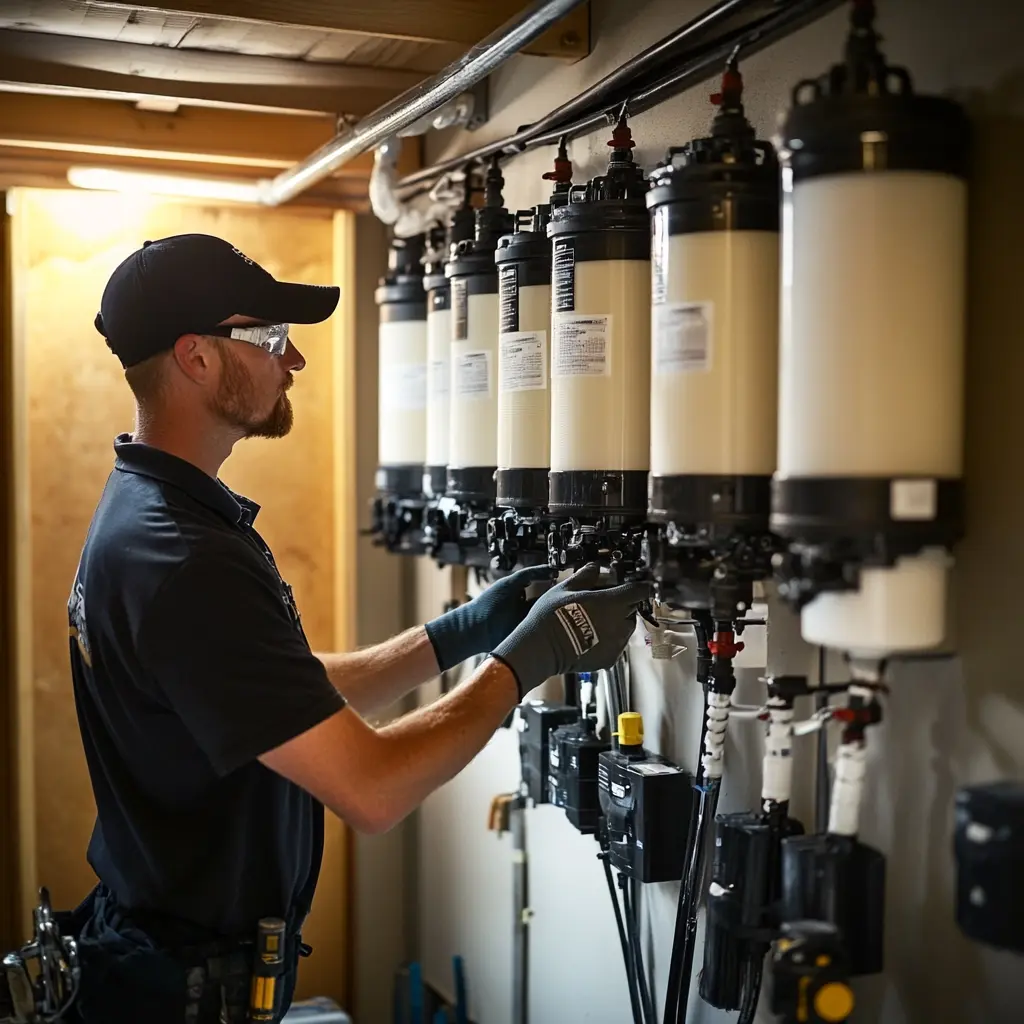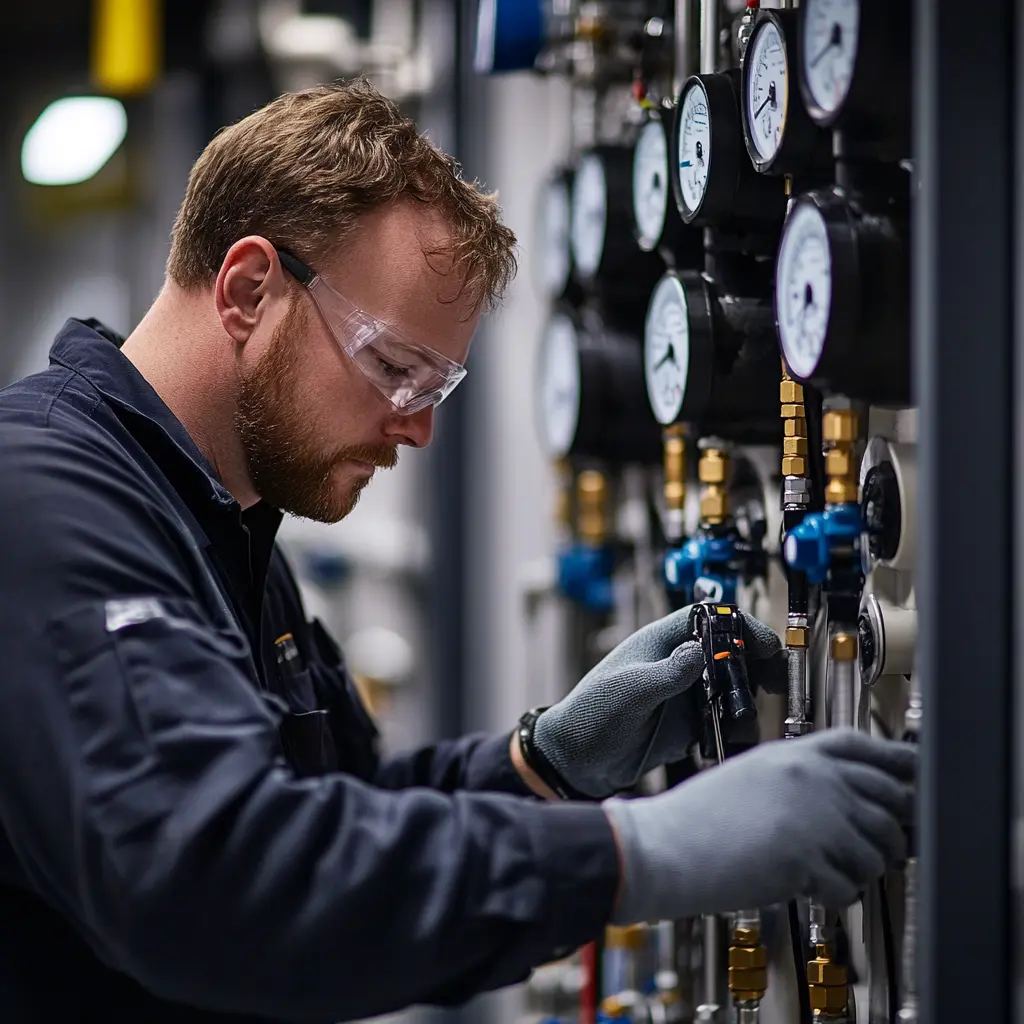Highlights
- Seattle tap water is well-treated but may still have odor or taste issues.
- The SPU report, EWG database, and EPA CCR provide reliable water quality data.
- Whole-house systems filter all water; faucet filters only handle one area.
- Activated carbon improves taste and smell; reverse osmosis removes more contaminants.
- Older plumbing may affect water quality and filtration needs.
Seattle’s tap water comes from clean mountain sources. It’s treated and tested by Seattle Public Utilities (SPU) to meet strict standards. Still, many homeowners choose to filter their water for extra peace of mind. If you’re thinking about adding a water filtration system, this guide will help you make a simple, informed decision.
We’ll walk through how to understand your current water quality, define your personal goals, and choose a system that fits your home and lifestyle.
Understand Your Starting Point
Where Seattle Water Comes From
Seattle’s water comes from two main sources: the Cedar River and the Tolt River. These are protected mountain watersheds. The city uses modern treatment methods like ozonation and chlorination to clean and disinfect the water.
Reliable Sources to Check Your Water Quality
Here are three trusted places to learn more about your water:
- Seattle Public Utilities Annual Water Quality Report
SPU releases a yearly report that shows what’s in the water. It includes test results for chemicals, metals, and other substances. - Environmental Working Group (EWG) Tap Water Database
The EWG collects and compares local water test data. You can search by ZIP code to see what’s been found in your area over time. - EPA Consumer Confidence Reports (CCR)
These are federal summaries of your local utility’s water testing. They follow national standards and make it easier to compare cities.
Key Water Quality Metrics to Look For
Here are four important things to notice in your report:
- Chlorine – Used to disinfect water. Some people notice a strong taste or smell.
- Lead/Copper – Not usually in Seattle’s water source, but may enter through old pipes in your home.
- Turbidity – This refers to cloudiness. Clear water is usually low in turbidity.
- Hardness – Measures minerals like calcium and magnesium. Seattle’s water is generally soft, but it can vary.
Why Clean Water Might Still Taste or Smell Off
Even high-quality water can have taste or odor issues. Three common causes:
- Chlorine smell – Added during treatment. Not harmful, but noticeable.
- Old pipes – Galvanized steel or corroded copper can affect taste.
- Biofilm or buildup – In your fixtures or plumbing, not the water supply.
If your water smells musty or tastes metallic, it’s often a sign of plumbing issues rather than unsafe water.

Know Your Water Goals
Before you pick a filter, it helps to be clear about what you want it to do. People install water filtration systems for different reasons. Think about what matters most to you and your household.
5 Questions to Help You Decide
- Do you notice a strong taste or smell when you drink from the tap?
- Are you concerned about chlorine, lead, or other chemicals?
- Does your home have old plumbing or galvanized pipes?
- Do you want filtered water for drinking, cooking, or the whole house?
- Are you looking for a simple fix or a long-term upgrade?
Your answers will shape the type of filter that makes sense for you.
4 Common Reasons Seattle Homeowners Install Filtration
- Improve taste – Especially for drinking and coffee or tea.
- Reduce chlorine – Many people want less chemical exposure.
- Protect family health – Clean water for kids or people with sensitivities.
- Peace of mind – Confidence that your water is clean, every time.
If You Live in an Older Home
Seattle has many homes built before 1970. These homes often have older plumbing that can affect water quality, even if the city’s supply is clean. Here’s how that might change your filtration needs:
- Galvanized pipes may add a metallic taste or sediment.
- Older fixtures might hold biofilm or bacterial buildup.
- Old solder or joints could leach trace amounts of lead.
If your home falls into this category, you may want to test your tap water at the faucet before choosing a system.
Compare System Types
There are two main ways to filter water in your home: at the point where water enters the house (whole-house) or right where you use it (point-of-use).
Whole-House (Point-of-Entry) vs. Point-of-Use Filters
Whole-House Filters:
- Treats all water entering the home.
- Protects showers, laundry, dishwasher, and faucets.
- Installed near your main water shutoff.
Point-of-Use Filters:
- Installed under the sink, on the faucet, or as a pitcher.
- Filters only what you drink or cook with.
- Easier and cheaper to install.
When Whole-House Makes Sense
Here are 3 reasons to choose a whole-house system:
- You want to reduce chlorine exposure in showers.
- You want clean water for all fixtures, not just drinking.
- Your plumbing has known issues, and you want added protection.
Why You Might Choose a Point-of-Use Filter
- You only care about water used for drinking or cooking.
- Your budget or space is limited.
- You’re renting or not ready for a full system.

Understand Common Filtration Technologies
Each filtration system uses a different method to clean water. Knowing the basics helps you make the right call.
4 Filtration Methods Found in Most Homes
- Activated Carbon – Traps chlorine, bad tastes, and some chemicals. Common in pitchers and under-sink filters.
- Sediment Filters – Removes dirt, rust, and debris. Often used before other filters in whole-house systems.
- Reverse Osmosis (RO) – Pushes water through a membrane. Removes a wide range of contaminants.
- UV Purification – Kills bacteria and viruses. Often paired with other systems.
How Activated Carbon Helps
- Removes chlorine, making water taste better.
- Traps VOCs and some pesticides.
- Reduces odor from sulfur or other smells.
Reverse Osmosis: Pros and Cons
Pros:
- Removes a wide range of contaminants, including lead.
- Improves taste and clarity.
- Good for households with health concerns.
Cons:
- Slower water flow.
- Wastes some water during filtration.
- Removes helpful minerals along with harmful ones.
Pick the Right Whole-House System
If you decide to install a whole-house system, there are a few things to consider before buying.
5 Things to Compare
- Flow Rate – Make sure it matches your home’s water usage.
- Filter Lifespan – Know how often filters need to be replaced.
- Maintenance – Some systems are easier to service than others.
- Space Requirements – Not all homes have room for large systems.
- Filter Type – Choose one that fits your water goals (carbon, sediment, etc.).
4 Questions to Ask a Plumber Before You Buy
- How will this affect my water pressure?
- What is the maintenance schedule for this system?
- Can this system work with my current plumbing setup?
- Are permits or inspections needed for installation?
3 Mistakes to Avoid
- Buying based on brand or marketing only – Focus on what the system actually filters.
- Ignoring your home’s plumbing limits – Some homes can’t handle certain systems.
- Skipping maintenance – Filters that aren’t changed on time won’t protect your water.
Final Thoughts and Next Steps
Installing a water filtration system in your Seattle home can improve how your water tastes, smells, and feels. It can also offer peace of mind, especially if your home is older or your family has specific needs.
Start by checking your water quality and thinking about what matters most to you. From there, choose a system that fits your goals, budget, and home.
If you’re not sure where to start, it’s a good idea to talk with a licensed plumber. They can help you understand your home’s plumbing, test your water, and recommend a system that actually fits your needs.
Need help choosing or installing a water filtration system in Seattle?
We help homeowners get clean, great-tasting water with systems that work. Call us today for a free estimate.
